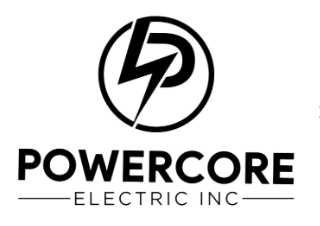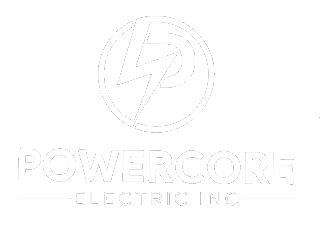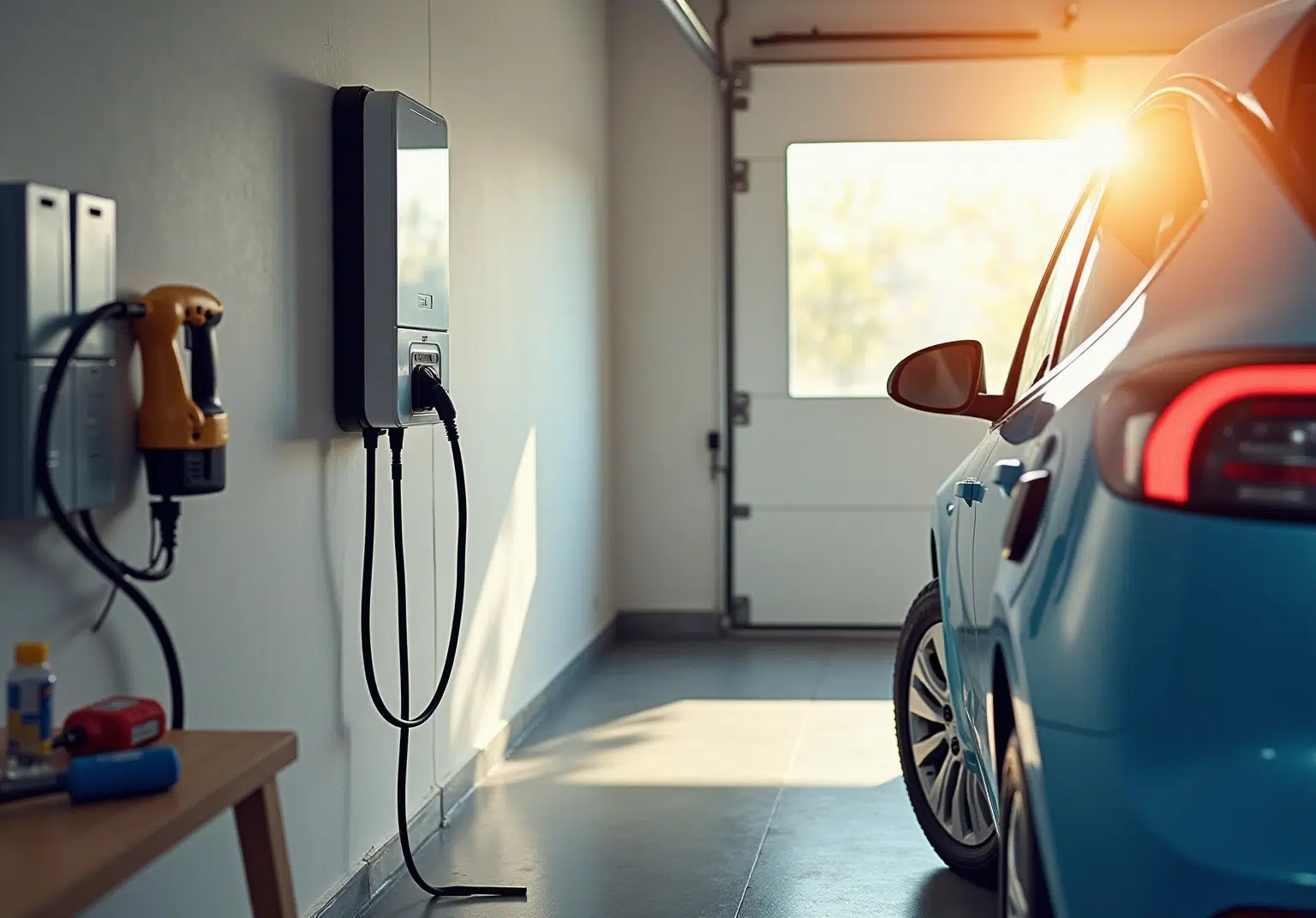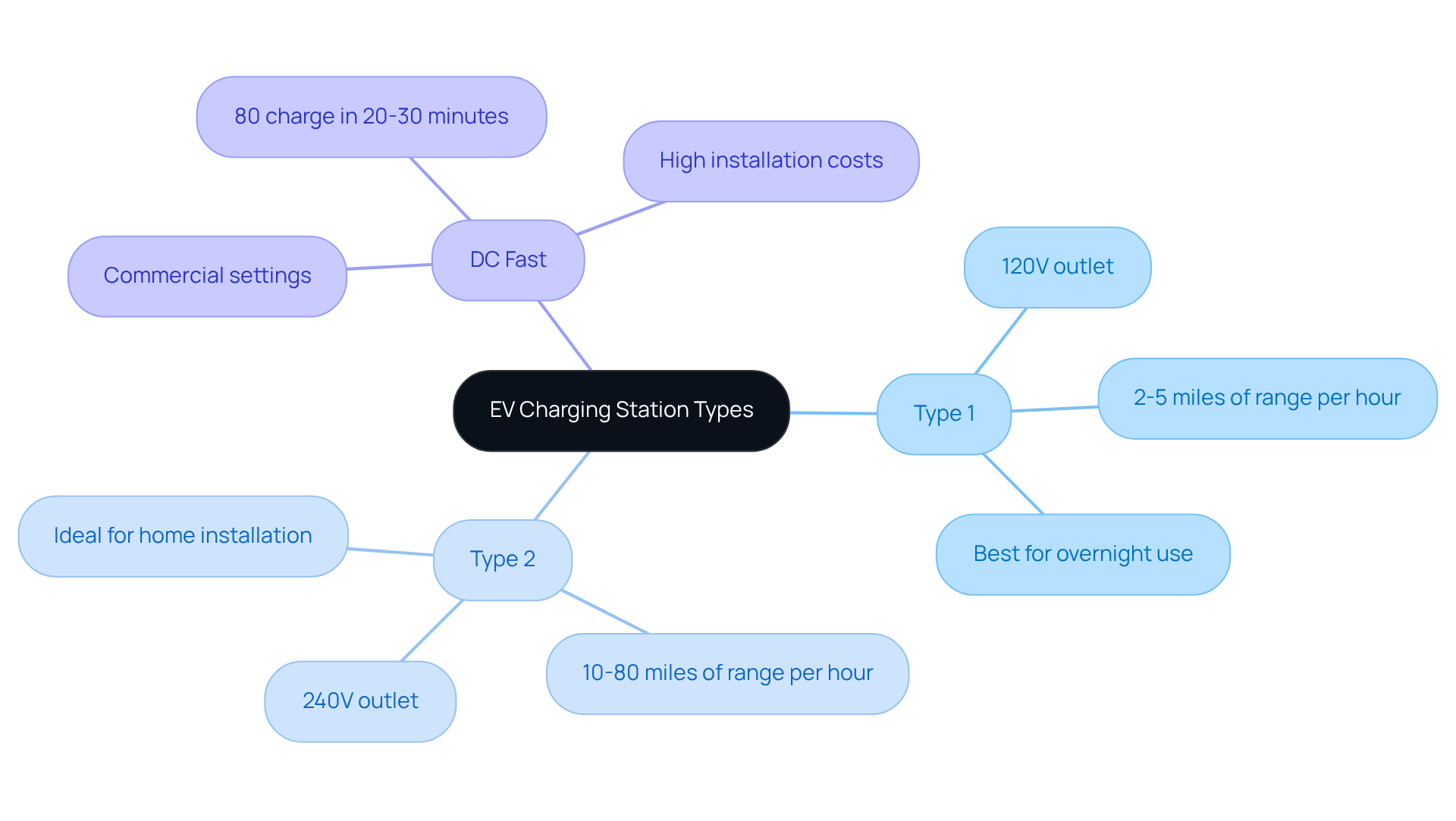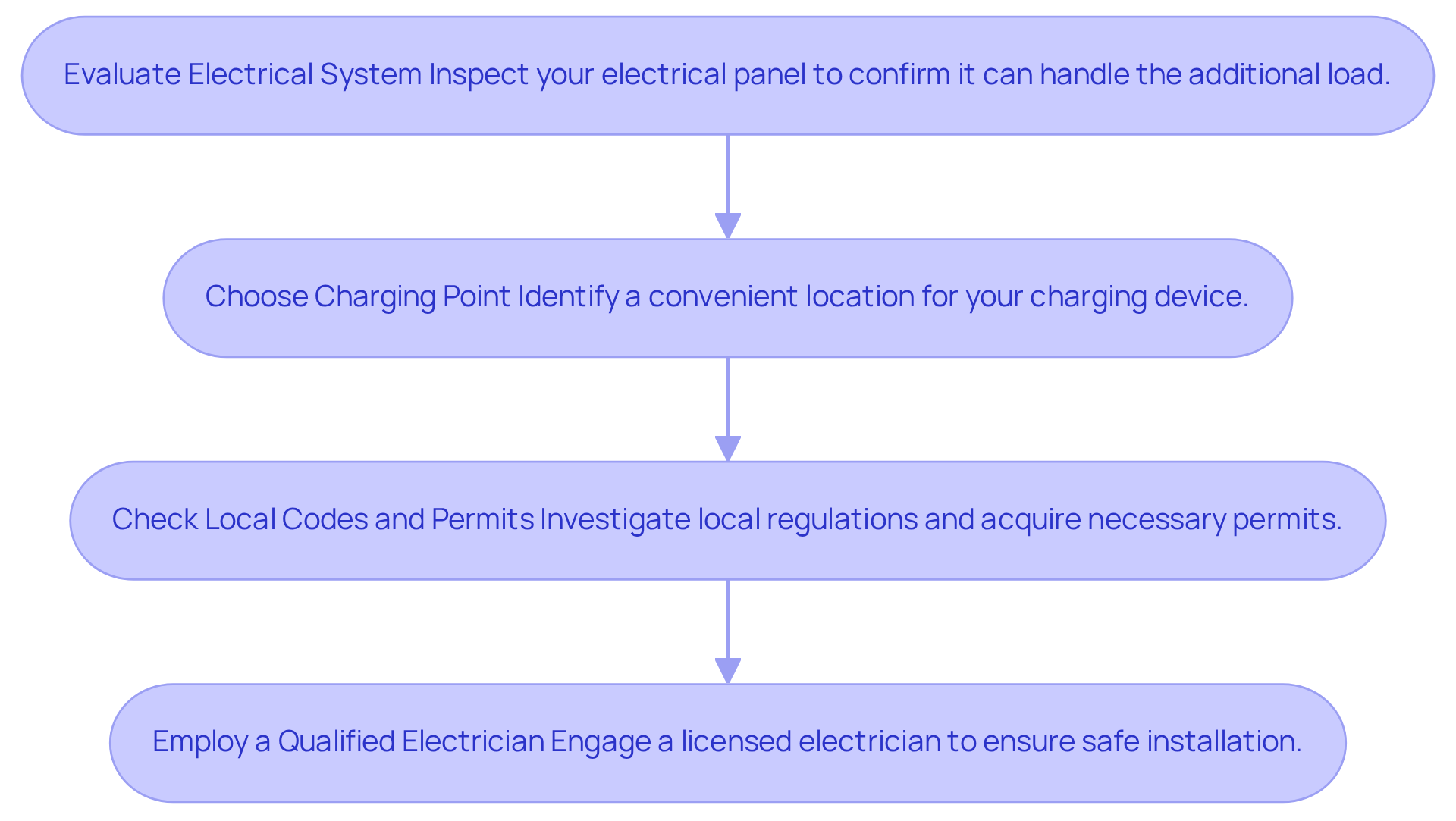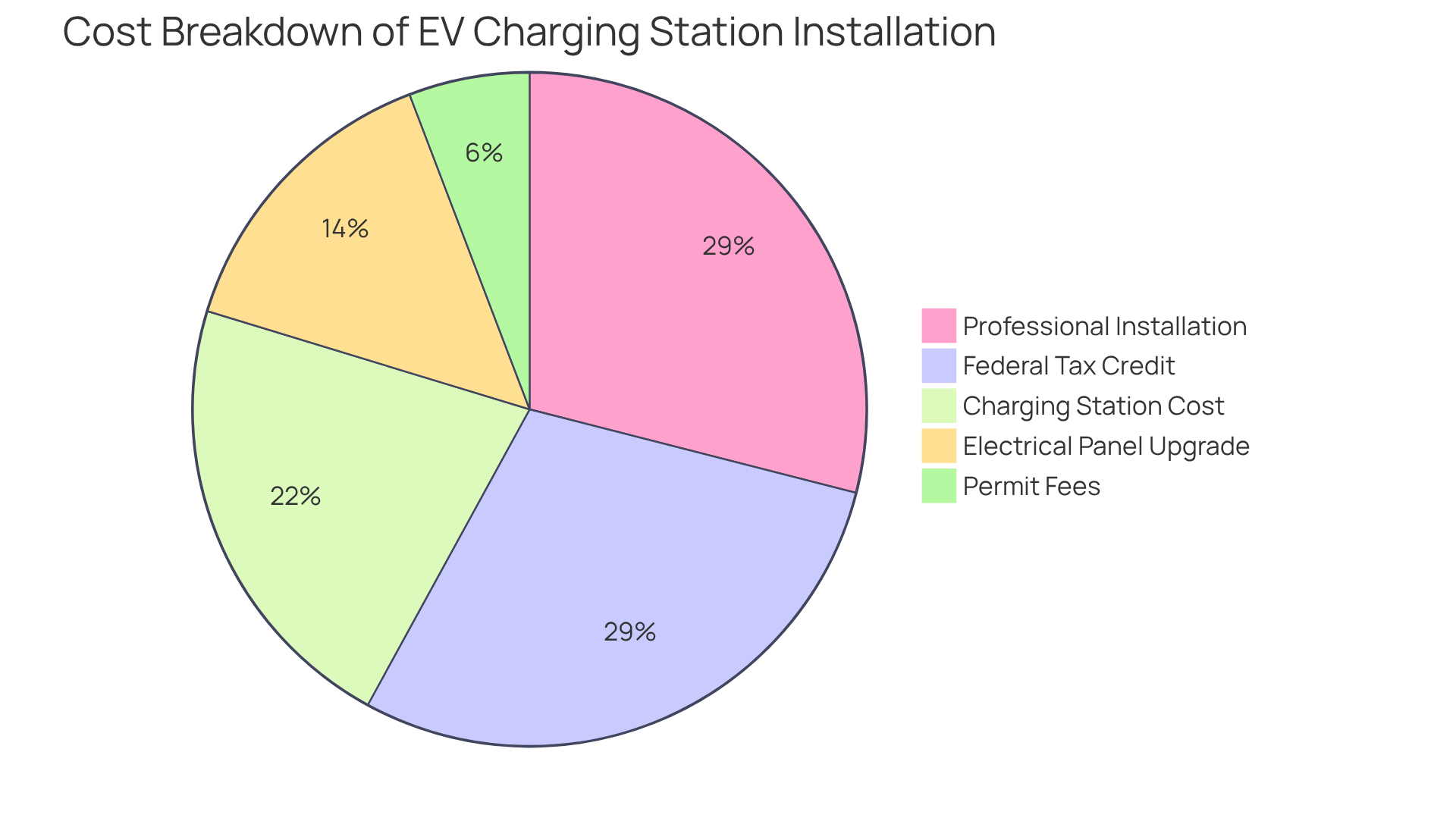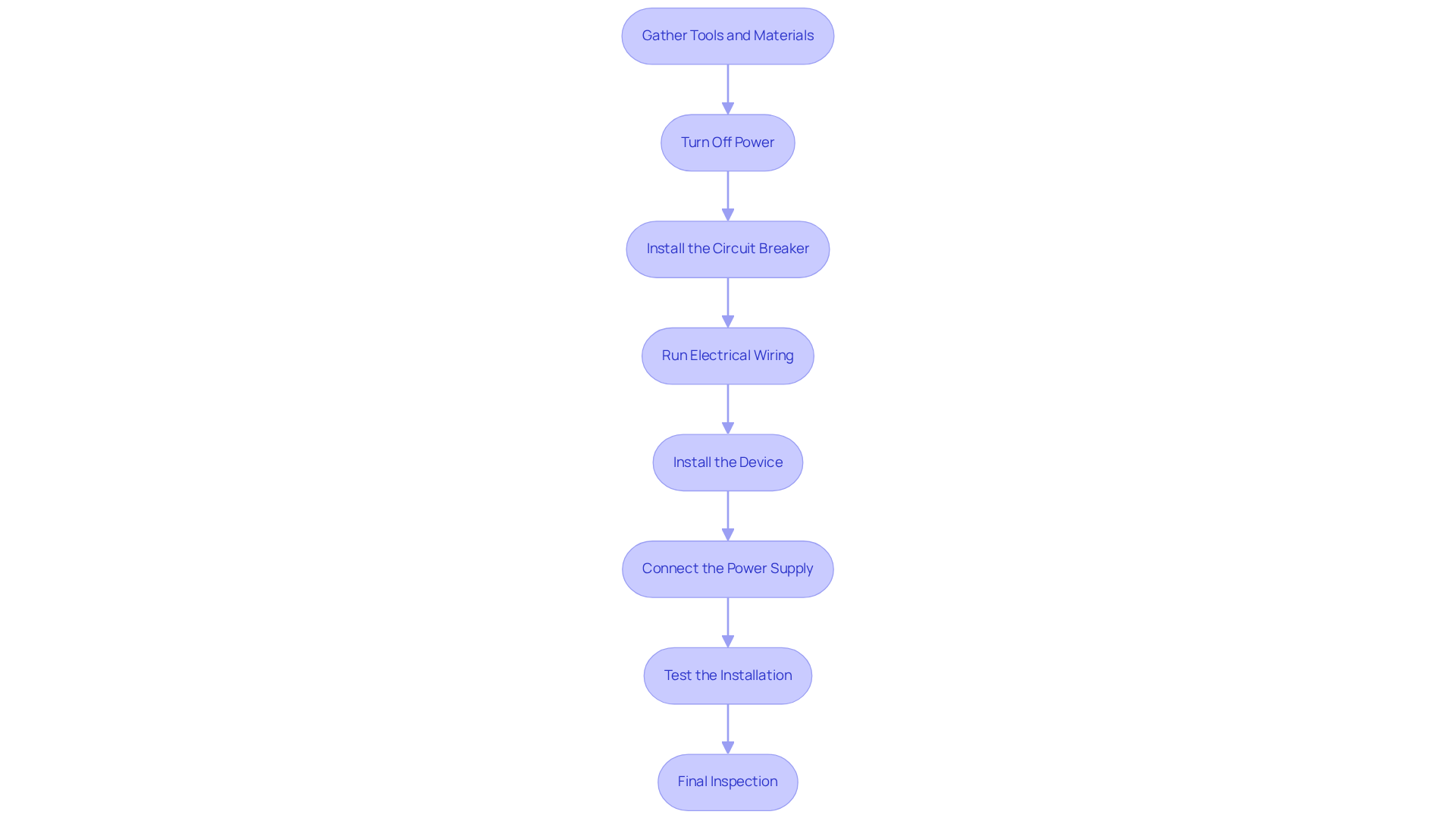Overview
Understanding the essential steps for successfully installing an EV charging station at home can feel overwhelming, especially when considering the impact on your energy bills. We recognize your concerns and want to guide you through this process with care and compassion.
First, it’s important to familiarize yourself with the different types of chargers available. This knowledge not only empowers you but also helps in making an informed choice that aligns with your needs and lifestyle.
Next, preparing your electrical system is crucial. Evaluating your home’s electrical requirements can seem daunting, but it’s a necessary step towards ensuring safety and efficiency. We recommend budgeting for costs upfront to avoid unexpected expenses later on. By taking these steps, you’re not just investing in a charger; you’re investing in your energy independence and a more sustainable future.
As you navigate this journey, remember to adhere to local regulations and consider employing a qualified electrician. Their expertise will provide peace of mind, ensuring that the installation process is handled correctly. You deserve a seamless experience, and having a professional by your side can make all the difference.
In conclusion, we’re here to support you every step of the way. Together, we can create a greener future, one charging station at a time. If you have any questions or need assistance, please don’t hesitate to reach out. Your journey towards energy independence starts here, and we’re excited to be part of it.
Introduction
Navigating the world of electric vehicle (EV) charging can feel overwhelming, especially with the many types of charging stations available. From the slower Type 1 chargers to the efficient Type 2 and the rapid DC Fast chargers, each option comes with its own set of advantages and requirements that can significantly influence the home installation process.
We understand that this can raise concerns about energy bills and the overall transition. This guide is here to help you navigate the essential steps for successfully installing an EV charging station at home while also preparing your electrical system and budget effectively.
With the increasing popularity of EVs, it’s common to wonder about the challenges homeowners might face in making this transition seamless and cost-effective. Together, let’s explore how we can make this journey smoother for you.
Understand EV Charging Station Types and Requirements
When it comes to electric vehicle (EV) refueling stations, we understand that choosing the right option can feel overwhelming. There are three primary types: , each designed to meet different needs and settings.
- Type 1 Charging Stations: These stations utilize a standard 120V outlet, making them the slowest option available. Typically, they provide around 2 to 5 miles of range per hour. While they can be suitable for overnight use, we recognize that they may not be the best fit for those with longer commutes, and we want you to have the best possible experience with your EV.
- Type 2 Devices: Operating on a 240V outlet, Type 2 units offer a more efficient solution, delivering between 10 to 80 miles of range per hour. These require a dedicated circuit and are often the preferred choice for setups like EV charging station home installation. They are perfect for homeowners looking to enhance their EV’s range. At Powercore Electric, we provide expert setup services for Level 2 devices, ensuring that your home’s electrical system is optimized for your charging needs, particularly for EV charging station home installation.
- DC Fast Chargers: Primarily found in commercial settings, these chargers can recharge an EV to 80% in just 20 to 30 minutes. Due to their high power demands and installation costs, they may not be the best choice for residential use.
Before you proceed with installation, it’s essential to verify your vehicle’s compatibility with the charger type you choose. Additionally, ensuring that your home’s electrical system can accommodate the selected charger is crucial. As the landscape of EV refueling evolves, understanding these options will empower you to make informed choices about your refueling solutions. Together, we can navigate this journey towards energy independence. For more information on EV charging stations, please don’t hesitate to reach out to Powercore Electric at (916) 699-8778 or via email at ryan.serrano@powercoreinc.net.
Prepare Your Home for EV Charger Installation
- Evaluate your electrical system: We understand that ensuring your home can support an EV charging station home installation is essential. Inspecting your electrical panel is a crucial first step to confirm it can handle the additional load. Most Level 2 charging stations require a dedicated 240V circuit, which may mean your panel needs an upgrade if it’s outdated for an EV charging station home installation. By taking the time to prepare your system, you can enjoy a hassle-free home power supply that meets your needs.
- Choose the Charging Point: It’s common to wonder where the best spot for your charging device might be. Identifying a convenient location, typically in your garage or near your parking area, is essential. Ensure it’s easily accessible and has enough space for the power cable. A strategically positioned device not only simplifies the charging process but also contributes to your overall cost savings by allowing you to power up during off-peak hours.
- Check Local Codes and Permits: Navigating local building regulations can feel overwhelming, but it’s important to investigate the guidelines concerning EV power unit setups. You may need to before proceeding with the installation. Understanding these requirements upfront for the EV charging station home installation can save you time and money in the long run, allowing you to focus on enjoying your new charging solution.
- Employ a Qualified Electrician: We encourage you to engage a licensed electrician skilled in EV charger setups, like those provided by Powercore Electric. They can assess your home’s electrical capacity to ensure the EV charging station home installation meets safety standards. This professional guidance is vital in ensuring that your home power solution is both safe and efficient, maximizing your savings and convenience. Together, we can make this transition smooth and beneficial for your energy needs.
Budget for Your EV Charging Station Installation
We understand that investing in an EV charging station home installation can feel daunting, especially when costs range from $300 to $1,200, depending on the brand and features. It’s important to note that Type 2 charging stations tend to be pricier than Type 1 stations, reflecting their advanced features and faster charging capabilities.
When considering for an EV charging station home installation, you might find prices between $500 and $1,500. This variation often depends on the complexity of the EV charging station home installation and any necessary electrical upgrades. If your electrical panel requires an upgrade for the EV charging station home installation, be prepared for an additional cost of $200 to $800. This step is crucial to ensure your home can handle the increased load from a Level 2 charger, especially in the context of EV charging station home installation, offering you peace of mind as you embrace energy independence.
Don’t forget to factor in potential permit fees, which can vary by location. Budgeting an additional $100 to $300 for permits is wise, as local regulations may require specific approvals for installation.
Additionally, it’s beneficial to explore local, state, or federal incentives that can significantly reduce your costs for EV charging station home installation. For example, the federal tax credit covers 30% of the expenses for EV charging station home installation, up to $1,000, providing a considerable financial advantage for eco-conscious homeowners like yourself who are looking to invest in EV charging solutions. Together, we can navigate these options to make your transition to sustainable energy smoother and more affordable.
Install Your EV Charging Station: A Step-by-Step Guide
- Gather Necessary Tools and Materials: We understand that embarking on an installation project can feel overwhelming. Begin by collecting essential tools such as a drill, screwdriver, and electrical tape. Additionally, your electrician will need specific materials, including suitable wiring and circuit breakers designed for your EV charging station home installation. Consider integrating solar battery systems to enhance your energy independence; selecting the right solar battery—whether lead-acid, lithium-ion, or flow—can significantly impact your overall energy strategy.
- Turn Off Power: It’s common to feel anxious about safety, so before you commence installation, ensure peace of mind by turning off the power at the circuit breaker.
- Install the Circuit Breaker: If your electric vehicle charging device necessitates a new circuit, proceed to install the corresponding circuit breaker in your electrical panel. This step is crucial for a safe and effective setup.
- Run Electrical Wiring: Carefully run the electrical wiring from the panel to the specified charging point, ensuring it is secured and protected from potential damage. This attention to detail helps prevent future issues.
- Install the Device: Follow the manufacturer’s guidelines to securely attach the unit to the wall, ensuring it is set at a suitable height for easy access when plugging in your vehicle. Remember, this is about making your life easier.
- Connect the Power Supply: Follow the installation manual to connect the wiring to the power source, ensuring all connections are tight and secure to prevent any electrical issues. The Electric Vehicle Charging Association emphasizes the importance of obtaining local building permits and having the work inspected to ensure safety. Consider how your solar battery system can complement your EV charging station home installation by providing a reliable power source during peak usage times.
- Test the Installation: After completing the connections, restore power and test the device to confirm it is functioning correctly. Be vigilant for any error codes or operational issues, as this ensures your investment works as intended.
- Final Inspection: If necessary, arrange for a final inspection with your local building authority to verify compliance with all relevant codes and regulations. Note that the proposed 2026 National Electrical Code may make it illegal for homeowners to perform their own EV charging station home installation, underscoring the necessity of hiring qualified professionals for installations. Together, we can ensure that your is safe, efficient, and compliant.
Conclusion
Understanding the essential steps for installing an EV charging station at home is crucial for making an informed decision that enhances energy independence and convenience. We understand that navigating this process can feel overwhelming, but by selecting the right type of charger, preparing your home’s electrical system, and budgeting appropriately, you can ensure a successful installation that meets your specific needs.
Key insights discussed include:
- The differences between Type 1, Type 2, and DC Fast chargers.
- The importance of evaluating your electrical system.
- Adhering to local regulations.
- Engaging a qualified electrician to guarantee safety, maximize efficiency, and ensure compliance with current codes.
- Budgeting for installation costs and exploring available financial incentives to ease the transition to an electric vehicle charging solution.
As the demand for electric vehicles continues to rise, investing in a home charging station becomes increasingly significant. Embracing this technology not only supports a sustainable future but also enhances personal convenience. For those considering an EV charging station home installation, taking the time to follow these steps will lead to a smoother, more rewarding experience in your journey toward energy independence. Together, we can make this transition seamless and fulfilling.
